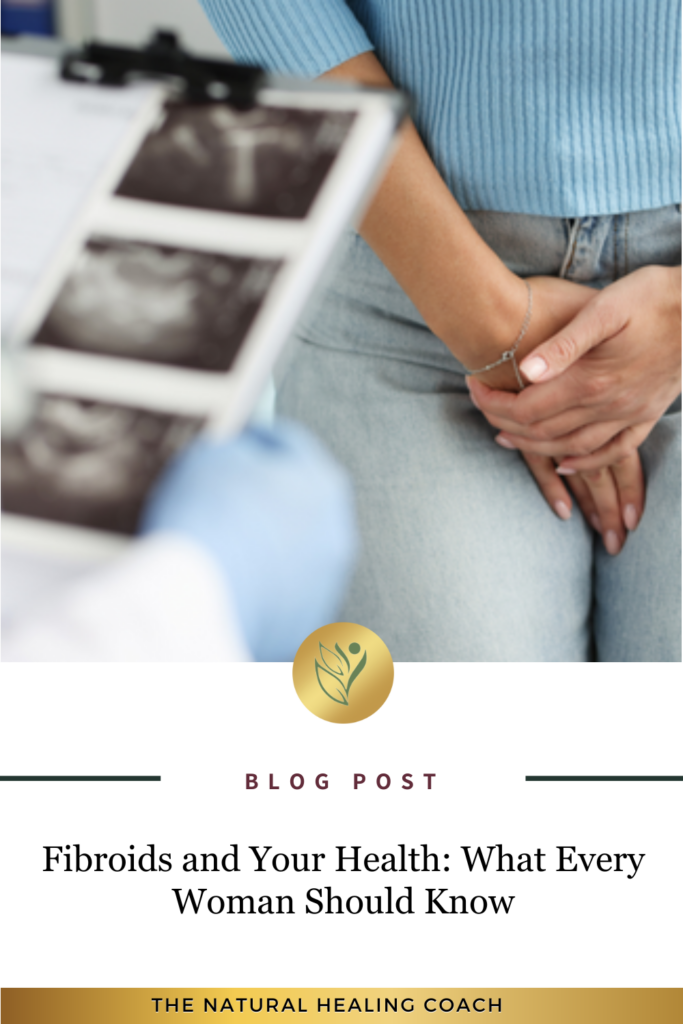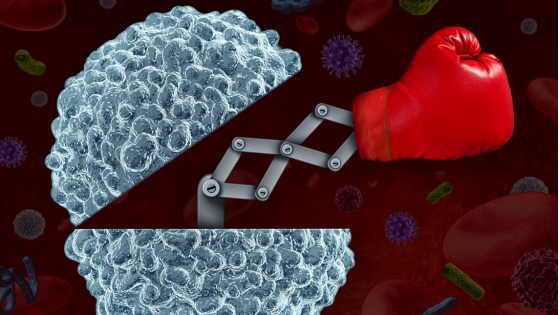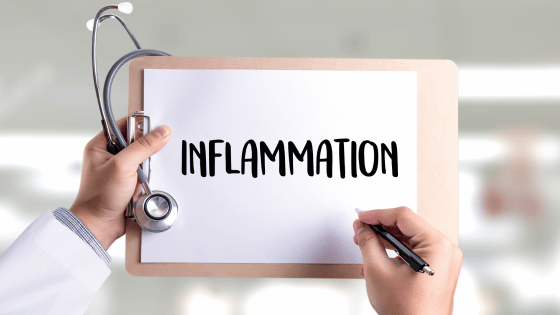Introduction
Imagine waking up every morning with a dull, persistent pain in your lower abdomen, coupled with heavy menstrual bleeding that seems never-ending. Each day feels like a battle against fatigue, pain, and emotional strain. This is a reality for many women living with fibroids.
Fibroids, also known as uterine leiomyomas, are non-cancerous growths that can develop in or around the uterus. They can range in size from small, undetectable nodules to large masses that distort the uterus.
For some women, fibroids remain silent and cause no symptoms. But for others, they can significantly impact daily life, leading to severe menstrual bleeding, debilitating pain, and even fertility issues. Share on XThe constant discomfort and unpredictability of symptoms can take a toll not only physically but also emotionally and mentally.
Raising awareness about fibroids is crucial because:
- Early detection and proper management can significantly improve the quality of life for those affected. Understanding the risk factors and symptoms allows women to seek timely medical advice, potentially preventing complications and more severe health issues, and
- Awareness can foster better communication between patients and healthcare providers, leading to more effective treatment plans and overall better health outcomes.
I have personally dealt with fibroids and understand the challenges they present. In 2017, I underwent Uterine Fibroid Embolization (UFE), a minimally invasive procedure that has helped me manage this condition effectively. My experience has underscored the importance of being informed and proactive about one’s health.
Before my UFE, I had been experiencing my cycles for almost a year straight, which was incredibly draining and disruptive to my life. My decision to undergo UFE was driven by the extreme fatigue I was experiencing, which I initially believed was solely due to the fibroids. However, it later turned out that this fatigue was also attributed to another unrelated diagnosis that I would not receive until two years later.
The journey of dealing with fibroids can be overwhelming, from the physical discomfort and emotional strain to navigating various treatment options. It’s crucial to have access to accurate information and supportive resources to make informed decisions. By sharing my story, I hope to encourage others to seek timely medical advice, explore all available treatment options, and connect with support networks that can provide guidance and comfort throughout their journey.
In this blog post, we’ll delve into the world of fibroids, exploring their causes, symptoms, and treatment options. We’ll also look at how lifestyle choices and alternative therapies can play a role in managing this common yet often misunderstood condition. Whether you have fibroids, know someone who does, or are simply seeking to understand more about women’s health, this blog aims to provide valuable insights and support.
What Are Fibroids?
Fibroids, also known as uterine leiomyomas or myomas, are benign (non-cancerous) growths that develop from the muscle tissue of the uterus. They can vary in size from tiny seedlings, undetectable to the human eye, to large masses that can distort and enlarge the uterus. Although fibroids are not life-threatening, they can cause significant discomfort and complications for many women.
Types of Fibroids
There are several types of fibroids, categorized based on their location within or on the uterus:
- Subserosal Fibroids: These fibroids develop on the outer wall of the uterus. They can continue to grow outward, increasing the size of the uterus and potentially causing pelvic pain and pressure on nearby organs.
- Intramural Fibroids: The most common type of fibroids, intramural fibroids, grow within the muscular wall of the uterus. As they expand, they can cause the uterus to become enlarged, leading to heavy menstrual bleeding, pelvic pain, and pressure.
- Submucosal Fibroids: These fibroids develop just underneath the inner lining of the uterus (the endometrium) and can protrude into the uterine cavity. Even small submucosal fibroids can cause significant symptoms, including heavy menstrual bleeding and issues with fertility.
- Pedunculated Fibroids: Pedunculated fibroids are attached to the uterine wall by a thin stalk. They can develop either inside the uterine cavity (submucosal) or on the outside of the uterus (subserosal). The stalk can twist, causing severe pain and requiring immediate medical attention.
Causes and Risk Factors
Understanding the causes and risk factors associated with fibroids is essential for early detection and effective management. While the exact cause of fibroids is not known, several factors are believed to contribute to their development.
Hormonal Imbalances
Fibroids tend to grow during the reproductive years when hormone levels are high. Estrogen and progesterone, two hormones that stimulate the development of the uterine lining during each menstrual cycle, appear to promote the growth of fibroids. These hormones play a critical role in the growth and maintenance of the uterine environment, and their levels fluctuate throughout the menstrual cycle, pregnancy, and menopause.
Fibroids contain more estrogen and progesterone receptors than normal uterine muscle cells do, which means they are more responsive to these hormones. Estrogen stimulates the proliferation of fibroid cells, leading to their growth. Progesterone, while generally known for its role in maintaining pregnancy, also promotes the growth of fibroids by stimulating cell division and increasing the production of proteins that prevent cell death.
Hormonal imbalances, such as those caused by polycystic ovary syndrome (PCOS), obesity, or hormone replacement therapy, can exacerbate fibroid growth. Additionally, the use of certain contraceptives may influence hormone levels and impact fibroid development. Understanding the role of hormones in fibroid growth is crucial for managing the condition, as hormonal treatments are often used to shrink fibroids or alleviate symptoms.
Genetic Factors
Genetics play a significant role in the development of fibroids. If your mother or sister had fibroids, your risk of developing them is higher. This familial pattern suggests a hereditary component, where certain genes may predispose individuals to fibroid development. Research has identified several genetic mutations linked to fibroid growth, including those affecting genes involved in cell growth and differentiation.
Studies have shown that fibroids often run in families, and specific genetic markers have been associated with an increased risk of developing fibroids. For example, mutations in the MED12 gene are commonly found in fibroid tissues. Additionally, variations in genes related to hormone regulation and the extracellular matrix, which provides structural support to cells, have been implicated in fibroid formation.
Understanding the genetic basis of fibroids can help in developing targeted therapies and personalized treatment plans. Genetic counseling may be beneficial for individuals with a strong family history of fibroids, providing insights into their risk and informing proactive health measures.
Lifestyle and Dietary Influences
Certain lifestyle and dietary factors can increase the risk of developing fibroids. A diet high in red meat and low in green vegetables, fruit, and dairy products has been associated with a higher risk of fibroids. Red meat consumption is thought to increase estrogen levels, promoting fibroid growth. Conversely, a diet rich in green vegetables and fruits, which contain antioxidants and anti-inflammatory compounds, may help reduce the risk.
Alcohol consumption, especially beer, may also increase fibroid risk due to its impact on hormone levels. Alcohol can elevate estrogen levels, thereby stimulating fibroid growth. Maintaining a healthy weight is another important factor, as obesity is linked to higher estrogen production, which can exacerbate fibroid development.
Regular physical activity can help regulate hormone levels and reduce the risk of fibroids. Exercise promotes overall health and helps maintain a healthy weight, which can mitigate the hormonal influences on fibroid growth. Additionally, stress management techniques such as yoga, meditation, and adequate sleep are essential, as chronic stress can disrupt hormone balance and potentially contribute to fibroid development.
Making conscious lifestyle and dietary choices can play a significant role in managing fibroid risk and symptoms. Adopting a balanced diet, limiting alcohol intake, and engaging in regular physical activity can contribute to overall well-being and potentially reduce the impact of fibroids on health.
Who Is Most Affected by Fibroids?
While fibroids can affect any woman, certain groups are more prone to developing these growths due to various genetic, hormonal, and lifestyle factors. Understanding these risk factors can help in early detection and management of fibroids.
African American Women
African American women are significantly more likely to develop fibroids than women of other ethnicities. Studies have shown that up to 80% of African American women will develop fibroids by the age of 50, compared to approximately 70% of white women. Additionally, African American women tend to develop fibroids at a younger age and are more likely to experience severe symptoms such as heavy menstrual bleeding, pelvic pain, and anemia. The reasons for these disparities are not fully understood but are believed to involve a combination of genetic, environmental, and socio-economic factors.
Women with a Family History
Having a mother or sister with fibroids increases a woman’s risk of developing them. The hereditary nature of fibroids means that women with a family history are up to three times more likely to develop fibroids themselves. This increased risk underscores the importance of family medical history in the assessment and management of fibroids. Genetic studies have identified mutations in specific genes, such as MED12, that are commonly associated with fibroid growth, further highlighting the role of genetics in fibroid development.
Women in Their 30s and 40s
Fibroids are most common during the reproductive years, particularly in the 30s and 40s. It is during these years that women are exposed to higher levels of estrogen and progesterone, which promote fibroid growth. After menopause, fibroid growth typically slows down or the fibroids may shrink due to a decrease in hormone levels. Statistics indicate that about 70-80% of women will have developed fibroids by the time they reach their 50s. This prevalence makes fibroids one of the most common reproductive health issues faced by women in their reproductive years.
Obesity and Overweight Women
Being overweight or obese increases the risk of developing fibroids. This increased risk is thought to be related to higher levels of estrogen, which is produced in fatty tissue. Women with higher body weight have a significantly greater risk of developing fibroids compared to women with lower body weight. Studies have shown that obese women have a 2-3 times higher risk of developing fibroids than women of normal weight. Maintaining a healthy weight through diet and exercise can help reduce this risk.
Additional Factors
Other factors that can influence the risk of fibroids include the use of hormonal contraceptives, age at first menstruation, and stress levels. Hormonal contraceptives that contain estrogen and progesterone can affect fibroid growth, although the impact varies depending on the type and dosage of the contraceptive. Early onset of menstruation (before age 10) has also been linked to a higher risk of fibroids. Chronic stress can disrupt hormone balance and potentially contribute to fibroid development, emphasizing the need for effective stress management strategies.
Impact on Health and Well-being
Understanding these risk factors can help women and healthcare providers take proactive steps in monitoring and managing fibroids. Early detection and lifestyle modifications can significantly improve the quality of life for those affected by this common condition. Being aware of these risk factors and taking preventive measures, such as regular health check-ups and maintaining a healthy lifestyle, can help in managing fibroids more effectively and improving overall health.
Symptoms and Diagnosis
Common Symptoms
Fibroids can cause a variety of symptoms, which can vary depending on the number, size, and location of the fibroids. Some common symptoms include:
- Heavy Menstrual Bleeding: Many women with fibroids experience heavy or prolonged menstrual periods.
- Pelvic Pain and Pressure: Fibroids can cause pain and a feeling of pressure in the pelvic area.
- Frequent Urination: Large fibroids can press on the bladder, leading to frequent urination.
- Constipation: Fibroids can also press on the rectum, causing constipation.
- Back and Leg Pain: Fibroids can cause pain in the lower back and legs due to pressure on nerves.
How Fibroids Are Diagnosed
Diagnosing fibroids typically involves a combination of medical history, physical examination, and imaging tests:
- Pelvic Exam: During a pelvic exam, a doctor may feel for irregularities in the shape of the uterus, which could indicate the presence of fibroids.
- Ultrasound: An ultrasound uses sound waves to create a picture of the uterus and detect fibroids. This can be done abdominally or transvaginally.
- Magnetic Resonance Imaging (MRI): MRI provides a detailed image of the uterus and is particularly useful in mapping fibroids before surgery.
- Other Imaging Tests: Other tests, such as hysterosonography, hysterosalpingography, and hysteroscopy, can also be used to diagnose fibroids.
Importance of Early Detection
Early detection of fibroids is crucial for effective management and to prevent complications. Regular gynecological exams and being aware of the symptoms can lead to early diagnosis and treatment, improving the quality of life for those affected by fibroids. Early intervention can help manage symptoms, reduce the risk of complications, and provide more treatment options.
Impact on Health and Well-being
Effects on Menstrual Cycle and Reproductive Health
As previously mentioned, fibroids can significantly impact the menstrual cycle and reproductive health. Many women with fibroids experience heavy and prolonged menstrual bleeding, which can be both physically and emotionally draining. Fibroids can also cause irregular periods, spotting, and severe menstrual cramps. These symptoms can interfere with daily life and activities, making it difficult for women to maintain their usual routines.
In terms of reproductive health, fibroids can pose challenges such as infertility and complications during pregnancy. Fibroids can interfere with the implantation of the embryo and the growth of the fetus, potentially leading to miscarriage, preterm birth, or complications during labor.
Potential Complications
- Anemia: Heavy menstrual bleeding caused by fibroids can lead to anemia, a condition characterized by a low red blood cell count. Anemia can cause fatigue, weakness, and shortness of breath.
- Infertility: Fibroids can block the fallopian tubes, preventing the sperm from reaching the egg, or interfere with the implantation of the embryo. Submucosal fibroids, in particular, can distort the uterine cavity and hinder fertility.
- Pregnancy Complications: Women with fibroids may experience a higher risk of pregnancy complications such as placental abruption, preterm delivery, and breech birth. Large fibroids can also cause pain and pressure during pregnancy.
Emotional and Psychological Impact
The symptoms and complications associated with fibroids can take a toll on a woman’s emotional and psychological well-being. Chronic pain, heavy bleeding, and fertility issues can lead to stress, anxiety, and depression. The impact on daily life and relationships can further exacerbate these feelings. It is important for women to seek support from healthcare professionals, support groups, and loved ones to manage the emotional aspects of living with fibroids.
Treatment Options
Medical Treatments
- Medications: Medications can help manage fibroid symptoms. Nonsteroidal anti-inflammatory drugs (NSAIDs) can relieve pain, while oral contraceptives or progestins can regulate menstrual bleeding. Gonadotropin-releasing hormone (GnRH) agonists can shrink fibroids by reducing estrogen and progesterone levels.
- Hormone Therapy: Hormone therapy can help control the growth of fibroids and alleviate symptoms. Options include GnRH agonists, selective estrogen receptor modulators (SERMs), and progestin-releasing intrauterine devices (IUDs).
Non-Surgical Procedures
- Uterine Fibroid Embolization (UFE): UFE is a minimally invasive procedure that cuts off the blood supply to the fibroids, causing them to shrink. This procedure is effective in reducing symptoms and improving quality of life.
- MRI-Guided Focused Ultrasound: This non-invasive procedure uses high-intensity focused ultrasound waves to heat and destroy fibroid tissue. It is a newer treatment option that offers the advantage of preserving the uterus and requiring no incisions.
Surgical Options
- Myomectomy: Myomectomy is a surgical procedure that removes fibroids while preserving the uterus. It is an option for women who wish to maintain their fertility. Myomectomy can be performed through various approaches, including abdominal, laparoscopic, or hysteroscopic surgery.
- Hysterectomy: Hysterectomy is the surgical removal of the uterus and is considered a definitive treatment for fibroids. This procedure is usually recommended for women who have severe symptoms and do not wish to preserve their fertility.
Complementary and Alternative Therapies
Diet Changes
Adopting a healthy diet can play a significant role in managing fibroid symptoms. A diet rich in fruits, vegetables, whole grains, and lean proteins provides essential nutrients that support overall health and may help reduce fibroid growth. These foods are high in fiber, antioxidants, and anti-inflammatory compounds, which can help regulate hormones and reduce inflammation, potentially alleviating some symptoms associated with fibroids.
- Fruits and Vegetables: Consuming a variety of colorful fruits and vegetables ensures a good intake of vitamins, minerals, and antioxidants. Dark leafy greens, berries, citrus fruits, and cruciferous vegetables like broccoli and cauliflower are particularly beneficial.
- Whole Grains: Whole grains such as brown rice, quinoa, and oats are excellent sources of fiber, which can help maintain healthy digestion and hormone levels.
- Lean Proteins: Including lean proteins like fish, poultry, beans, and legumes in your diet can provide essential amino acids without the added saturated fats found in red meat.
Reducing the intake of red meat and alcohol can also be beneficial. Red meat has been associated with higher estrogen levels, which can stimulate fibroid growth. Opting for plant-based proteins or lean animal proteins can help manage these hormone levels. Alcohol, particularly beer, can also increase estrogen levels and should be consumed in moderation or avoided.
Herbal Remedies
Some women find relief from fibroid symptoms through herbal remedies. These natural treatments can provide an alternative or complement to conventional medical therapies, but it is crucial to consult with a healthcare professional before starting any herbal regimen to ensure safety and efficacy.
- Green Tea Extract: Green tea is rich in antioxidants, particularly epigallocatechin gallate (EGCG), which has anti-inflammatory and anti-proliferative properties. Some studies suggest that green tea extract may help reduce the size of fibroids and improve symptoms.
- Vitex (Chasteberry): Vitex is commonly used to balance hormones and support reproductive health. It is believed to help regulate estrogen and progesterone levels, potentially reducing fibroid growth and associated symptoms.
- Milk Thistle: Milk thistle is known for its liver-supporting properties, which can help in detoxifying the body and balancing hormones. A healthy liver efficiently processes excess hormones, potentially reducing fibroid-related symptoms.
It is important to discuss any herbal treatments with a healthcare provider to ensure they do not interfere with other medications or conditions.
Acupuncture
Acupuncture, a traditional Chinese medicine technique, can help alleviate pain and improve overall well-being in women with fibroids. This therapy involves inserting thin needles into specific points on the body to stimulate the body’s natural healing processes and promote balance.
- Pain Relief: Acupuncture is known for its ability to reduce pain by stimulating the release of endorphins, the body’s natural painkillers. This can be particularly helpful for managing the pelvic pain and cramping associated with fibroids.
- Hormonal Balance: Acupuncture can help regulate the endocrine system, which controls hormone production and balance. By promoting hormonal balance, acupuncture may help reduce the growth and symptoms of fibroids.
- Stress Reduction: Chronic stress can exacerbate fibroid symptoms and disrupt hormonal balance. Acupuncture can help reduce stress and promote relaxation, contributing to overall better health and symptom management.
Women considering acupuncture should seek a licensed and experienced practitioner to ensure safe and effective treatment.
Incorporating these complementary and alternative therapies into your health routine can offer additional support in managing fibroid symptoms and improving overall well-being. Always consult with healthcare professionals before making significant changes to your treatment plan.
Hormonal Connections Between Fibroids and Autoimmune Diseases
Understanding the relationship between hormones, fibroids, and autoimmune disease is essential for comprehensive health management. Both conditions are influenced by hormonal changes, particularly involving estrogen and progesterone.
Hormones and Fibroids
Fibroids are hormone-dependent growths, significantly influenced by estrogen and progesterone:
- Estrogen: Fibroids have a higher concentration of estrogen receptors than normal uterine muscle cells. Elevated levels of estrogen, especially during reproductive years, can stimulate fibroid growth.
- Progesterone: Progesterone also contributes to fibroid growth by promoting cell proliferation and increasing fibroid size.
Hormones and Autoimmune Diseases
Hormones such as estrogen and progesterone also play crucial roles in the development and progression of autoimmune disease:
- Estrogen: Estrogen can enhance immune responses, potentially contributing to the onset of autoimmune disease. High estrogen levels are linked to increased activity of certain immune cells and the production of autoantibodies.
- Progesterone: Progesterone generally exerts an immunosuppressive effect, modulating immune responses. However, hormonal fluctuations during menstrual cycles, pregnancy, or hormonal therapies can impact autoimmune disease activity.
Shared Hormonal Influences
- Fluctuations: Hormonal fluctuations influence both fibroids and autoimmune disease. For example, autoimmune disease symptoms can worsen during periods of hormonal change, such as pregnancy or menopause, which also affect fibroid growth.
- Therapies: Hormonal therapies used to treat fibroids, like GnRH agonists that lower estrogen levels, can also impact autoimmune disease activity by altering immune responses.
Clinical Implications
- Management: Understanding the hormonal influences on both conditions aids in the comprehensive management of women who have fibroids and autoimmune disease. Treatments that balance hormone levels may benefit both conditions.
- Research: Ongoing research into the hormonal mechanisms behind fibroids and autoimmune disease may lead to better therapeutic strategies addressing both conditions simultaneously.
The connection between the impact of hormones on fibroids and autoimmune disease underscores the importance of considering hormonal balance in the management and treatment of these conditions. By understanding how hormones influence both fibroids and autoimmune diseases, healthcare providers can develop more effective and personalized treatment plans for women affected by these issues.
Resources for Further Reading and Support
Navigating the journey with fibroids can be challenging, but having access to the right resources can make a significant difference. Below are some educational websites, support groups, books, professional organizations, and apps that offer valuable information and support for those dealing with fibroids.
Educational Websites
- The Mayo Clinic: Comprehensive information on fibroids, symptoms, diagnosis, and treatment options.
- Mayo Clinic – Fibroids
- MedlinePlus: A trusted source of health information from the National Library of Medicine. MedlinePlus – Uterine Fibroids
- Cleveland Clinic: Detailed articles and patient resources on fibroids.
Support Groups and Forums
- National Uterine Fibroids Foundation (NUFF): Offers support, education, and advocacy for women with fibroids.
- Fibroid Relief: Provides information and resources, as well as a platform for women to share their stories.
Books and Publications
- “Healing Fibroids: A Doctor’s Guide to a Natural Cure” by Allan Warshowsky: A book that explores natural and holistic approaches to managing fibroids.
- “Uterine Fibroids: The Complete Guide” by Johanna Skilling: Provides comprehensive information on fibroids, including medical and surgical treatments.
- “The Fibroid Elimination Bible: A Comprehensive Guide to Natural and Effective Remedies” by Shola Oslo: Focuses on natural remedies and lifestyle changes to manage fibroids.
Professional Organizations
- American College of Obstetricians and Gynecologists (ACOG): Offers guidelines and information for patients about fibroids.
- Society of Interventional Radiology (SIR): Provides information on Uterine Fibroid Embolization and other non-surgical treatments.
Health and Wellness Apps
- MyFibroid Study App
- The MyFibroid Study App is designed to help women track their fibroid symptoms, monitor their menstrual cycles, and record the impact of fibroids on their daily lives. It allows users to share this information with their healthcare providers to improve treatment planning and outcomes.
- Features: Symptom tracking, treatment monitoring, health reports
- MyFibroid Study App
- Flo Health
- Flo Health is a comprehensive period and ovulation tracker that can also be used to monitor symptoms related to fibroids. It offers personalized health insights and educational content to help users understand their menstrual health.
- Features: Period tracking, symptom logging, personalized health tips, community support
- Flo Health
- My Chart
- My Chart is a widely-used patient portal that allows users to access their health records, communicate with their healthcare providers, and track various health metrics. Women with fibroids can use it to keep track of their symptoms, treatments, and appointments.
- Features: Access to medical records, appointment scheduling, secure messaging with healthcare providers
- My Chart
- Period Tracker by GP Apps
- Period Tracker is a simple and user-friendly app for tracking menstrual cycles and related symptoms. Women with fibroids can log symptoms such as heavy bleeding and pelvic pain to monitor their condition over time.
- Features: Menstrual cycle tracking, symptom logging, ovulation prediction
- Period Tracker by GP Apps
- Ovia Health
- Ovia Health offers a suite of apps for fertility, pregnancy, and parenting. The Ovia Fertility app can be particularly useful for women with fibroids, as it helps track menstrual cycles, symptoms, and fertility signs.
- Features: Fertility tracking, symptom logging, health insights, community support
- Ovia Health
- MyFLO
- MyFLO is a period tracker app that helps women understand their menstrual cycles and symptoms in relation to their overall health. It provides personalized recommendations for managing symptoms and improving reproductive health.
- Features: Period tracking, symptom logging, personalized health recommendations
- MyFLO
Mental Health Apps
- Headspace
- Offers guided meditation and mindfulness practices.
- www.headspace.com
- Calm
- Provides guided meditation, sleep stories, and relaxation techniques.
- www.calm.com
- Moodpath
- A mental health app that helps track moods and provides insights into mental well-being.
- www.moodpath.de
These resources can provide additional support and information as you navigate your journey with fibroids. Whether you’re looking for medical advice, personal stories, or alternative treatment options, these tools can help you make informed decisions about your health. Remember, you’re not alone, and there are many resources available to support you.
Final Thoughts
Fibroids are a common condition that can significantly impact a woman’s health and well-being. Understanding the causes, symptoms, and treatment options is crucial for managing this condition effectively. Key points to remember include:
- Prevalence and Impact: Fibroids are non-cancerous growths in or around the uterus, often influenced by hormonal imbalances, genetic factors, and lifestyle choices. They can cause symptoms ranging from heavy menstrual bleeding and pelvic pain to frequent urination and fertility issues.

- Early Detection and Management: Early detection and a variety of treatment options, including medical, non-surgical, surgical, and alternative therapies, can help manage symptoms and improve quality of life. Regular gynecological exams and being aware of the symptoms are crucial for early diagnosis and effective management.
- Seeking Medical Advice: It is essential to seek medical advice if you experience any symptoms of fibroids. Early diagnosis and treatment can prevent complications and improve your overall health. Don’t hesitate to discuss your symptoms and concerns with a healthcare provider.
- Empowerment Through Knowledge: Women must advocate for their health, seeking the best possible care and treatment options. Understanding your condition, exploring available treatments, and making informed decisions can empower you to take control of your health journey.
By sharing my personal experience with fibroids and Uterine Fibroid Embolization (UFE), I hope to encourage others to seek timely medical advice, explore all available treatment options, and connect with support networks that can provide guidance and comfort throughout their journey. Remember, you are not alone, and there are many resources and support systems available to help you manage fibroids effectively.
Call to Action
I invite you to share your experiences or ask questions in the comments section below. Your stories and insights can provide valuable support to others who may be going through similar challenges.
For more health-related content, be sure to follow this blog. Stay informed and proactive about your health, and remember, you’re not alone in this journey.
If you’re looking for further reading or support, consider exploring resources and support groups dedicated to fibroid awareness and women’s health. Engaging with a community can provide additional support and encouragement as you navigate your health journey.
If you are looking for more tips and support, join me over on my group page, The Village – A Natural HEALing Community, to get tons of information and tips to help you take your HEALTHY EATING and ACTIVE LIVING to the next level.
REFERENCES:
- Mayo Clinic. (n.d.). Uterine Fibroids – Symptoms and Causes.
- MedlinePlus. (n.d.). Uterine Fibroids. National Library of Medicine.
- Cleveland Clinic. (n.d.). Uterine Fibroids.
- American College of Obstetricians and Gynecologists (ACOG). (n.d.). Uterine Fibroids FAQ.
- Society of Interventional Radiology (SIR). (n.d.). Uterine Fibroid Embolization (UFE).
- National Uterine Fibroids Foundation (NUFF). (n.d.).
- Fibroid Relief. (n.d.).
MORE RELATED POSTS:










+leave a comment . . .